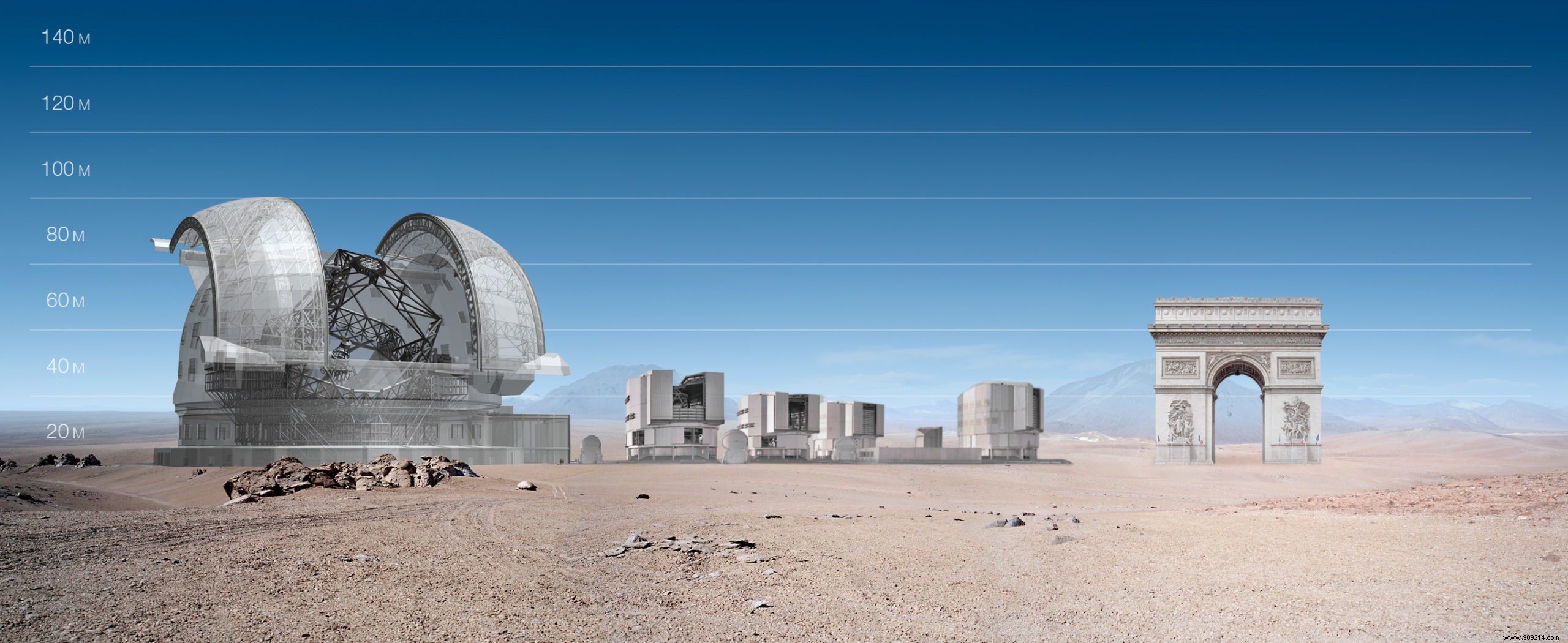Several large observatories will make their debut over the next few years. These include the James Webb Telescope or the Square Kilometer Array (SKA), which will be fully operational by the early 2030s. the Universe.
You will find it in northern Chile, on Cerro Armazones, about twenty kilometers east of Cerro Paranal. It is here, in the heart of the Atacama Desert, more than 3,000 meters above sea level, that the "first stone" of the world's future large optical telescope was laid almost four years ago, in May 2017. The observatory, whose cost is around one billion euros, should be able to capture its first light from the beginning of the year 2025 , enjoying completely clear skies for much of the year, as well as dry and cold air. It will succeed the current Very Large Telescope (VLT).
A single number alone sums up the enormity of the European Giant Telescope – or in English Extremely Large Telescope (ELT):the diameter of its main mirror (or reflector), which will be 39.3 meters . In concrete terms, the larger the surface of a mirror, the more light it collects and the more it makes faintly luminous objects visible.
Thanks to this mirror, the ELT alone will be able to collect more light than all of today's large ground-based telescopes combined. Compared to its predecessor, the VLT, it will allow astronomers to access objects twenty-five times dimmer . Starting from the principle that the brilliance of an object decreases with the square of the distance that separates us from it, to say that an object is twenty-five times less luminous than another therefore comes down to saying that it is five times more far. In other words, the ELT will multiply by five the size of the observable Universe .
Building on these incredible technical characteristics, researchers will be able toobtain direct images of rocky exoplanets (like the Earth) within a radius of more than twenty-five light years. Some could then evolve within the "habitability zone" of their star - allowing the existence of liquid water on the surface. Once these worlds have been targeted, researchers will then be able to analyze their atmosphere and detect the possible presence of life through the presence and proportion of certain gases.

At the other end of the ladder, the ELT will also make it possible to probe the infancy of the universe . One period in particular interests researchers:the end of the Dark Ages, which also marks the beginning of the Stellar Age. In other words, the passage from a primordial universe uniformly bathed in hot and brilliant radiation, to a universe allowing the ignition of the very first generation of stars.